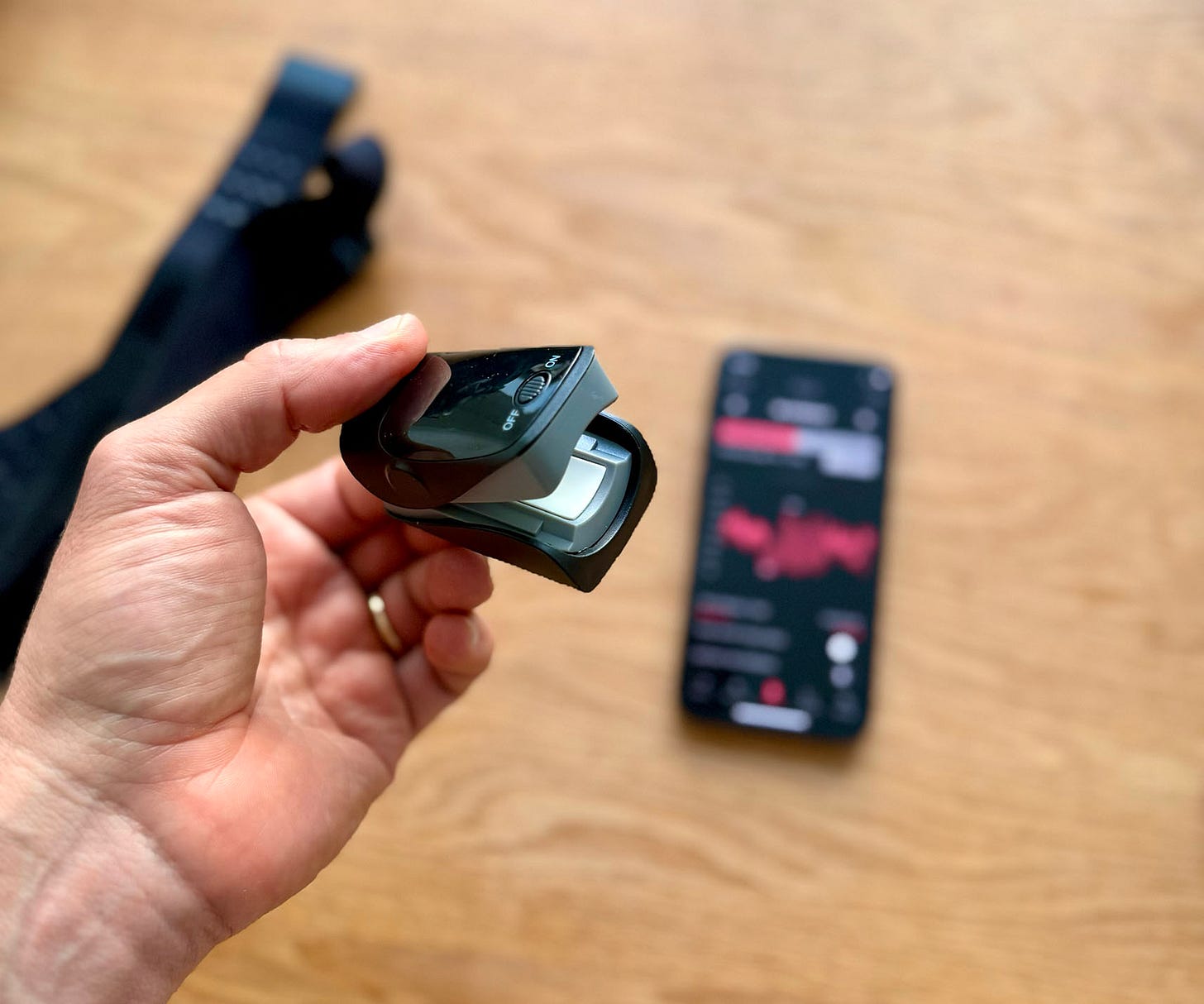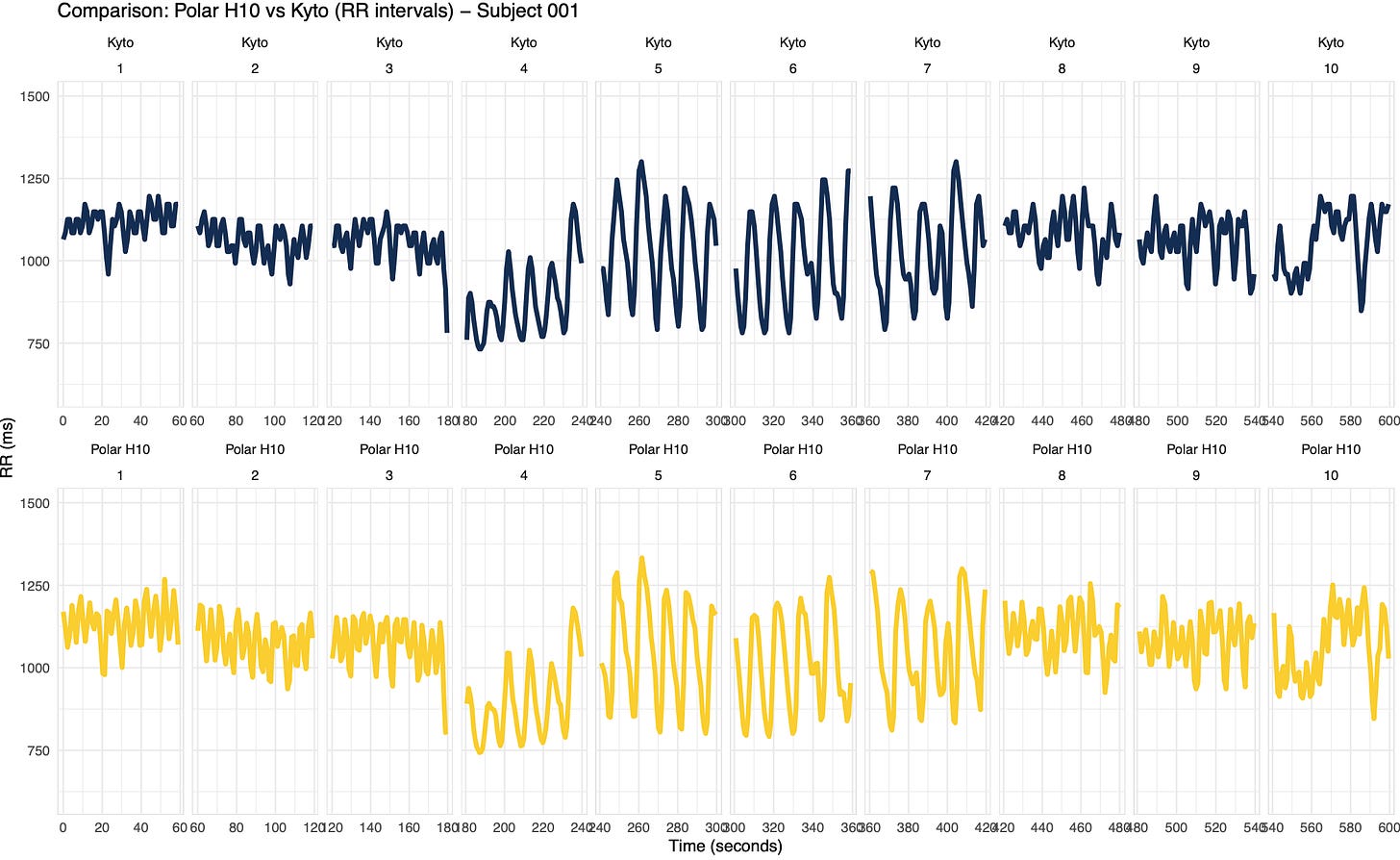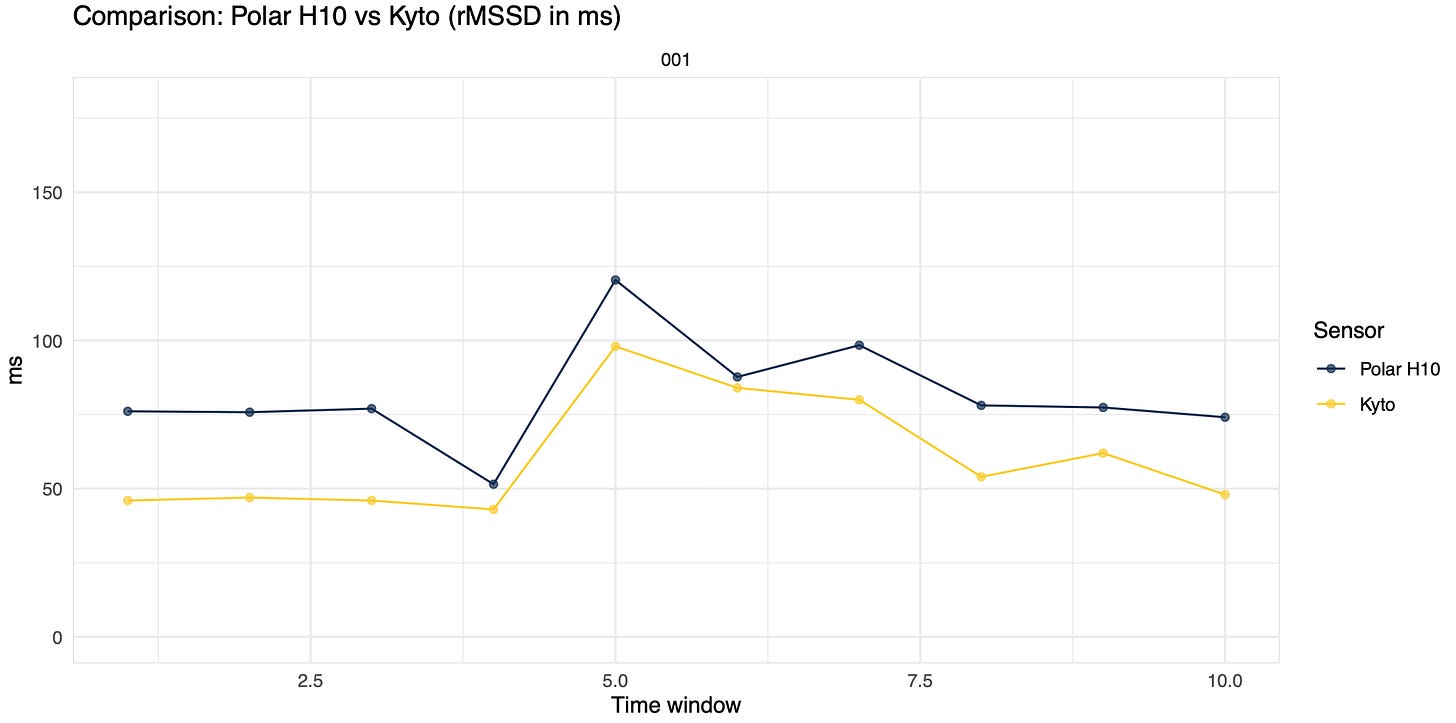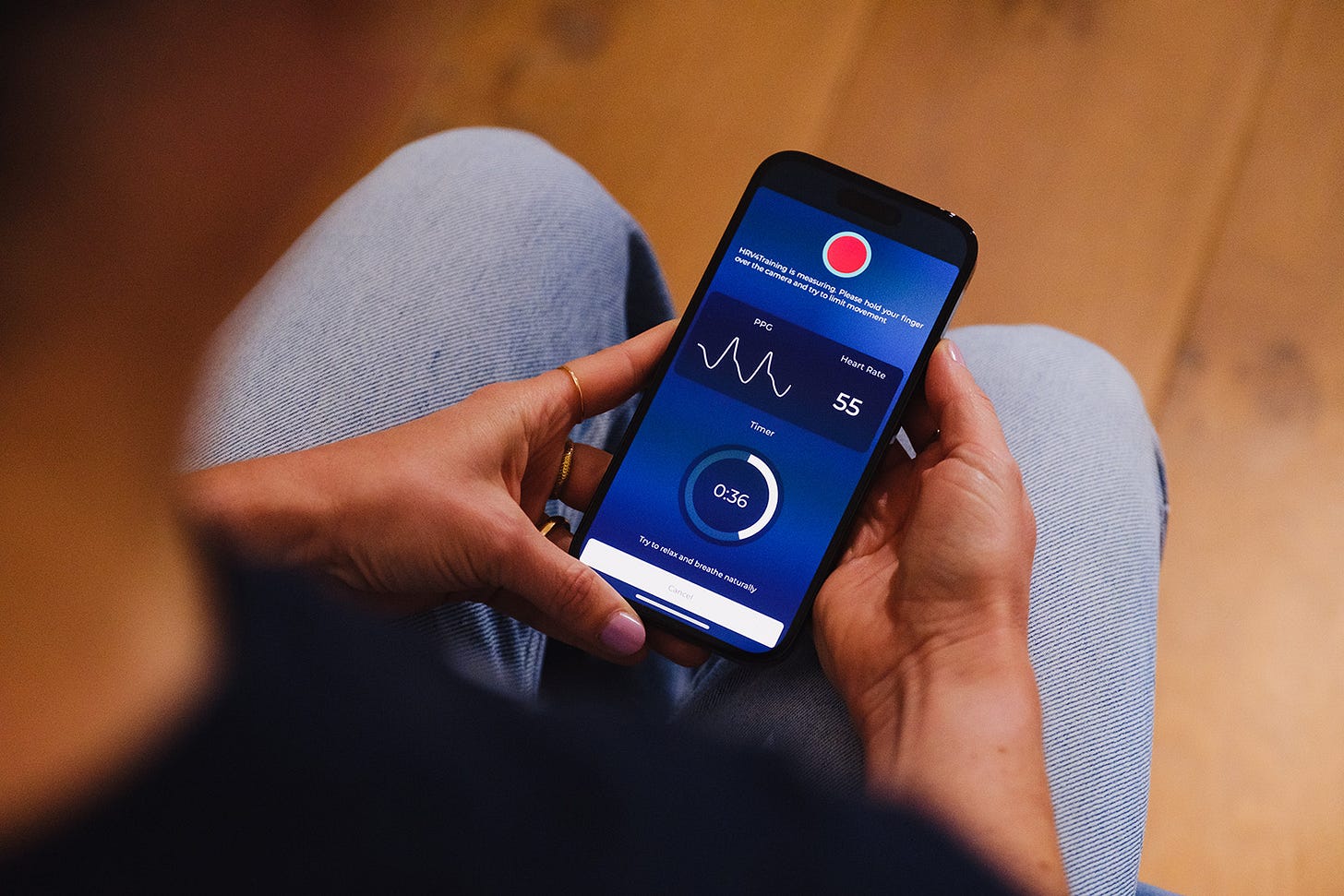Kyto 2936: another decent, cheap sensor for spot check HRV measurements
I’ve previously shown a comparison of the Kyto 2935 (previous model, including a somewhat more cumbersome setup) with a Polar H10, showing good data even though somewhat suppressed in terms of HRV with respect to our reference data.
There is now a new version of the Kyto sensor, which is called 2936 and is wireless (you can find it here, and again, no affiliation).
I often discuss morning protocols and their superior utility with respect to night data and wearables, but the options out there are not many if we want to use a sensor with a third-party app and not be locked within whatever ecosystem the sensor / wearable manufacturer has created. In this context, Kyto sensors are a good option.
Below is some data collected using the Kyto 2936 device.
The protocol consisted of either normal breathing at rest (minutes 1-3 and 8-10), while seated, or slow breathing exercises (minutes 4-7).
For data collection, I used the HRV Logger app to collect RR intervals from the chest strap, and another HRV Logger app to collect RR intervals using the Kyto (my apps are available here).
RR and PP intervals:
We can see that the PP and RR intervals track very well the different phases of the protocol (minutes 1-3 with regular breathing, minutes 4-7 with slow breathing, and again regular breathing for the last 3 minutes), and are rather similar.
However, when computing rMSSD from RR and PP intervals for the data above, we do have an offset in the data, similarly to what I had seen for the previous sensor (for artifact removal, I used a simple 25% filter):
Still, we can see that the relative changes within sessions are captured very well, even though for some reason, data from the Kyto sensor seems lower (which is somewhat odd, as typically we get higher variability with PPG). I wonder if there is some form of overcorrection in place.
As my recommendation is never to do anything with absolute values of HRV, but to track changes over time, I consider this device good enough for the task, given the PP intervals above, and the ability to clearly capture relative changes even in a short segment of data. This is the sensor Alessandra is currently using to test the impact of different yogi breathing practices (like Pranayama) on HRV, as part of her teacher training course. Once we have some more data, I’ll report back on that too.
In the meantime, if you decide to buy it, make sure not to compare data collected with this sensor, with data collected with a different device (this is the case for any sensing modality, as there can always be differences based on where the sensor is placed, the technology used, artifact correction, etc.).
In HRV4Training, the app will automatically re-learn your normal range as it is always kept current, to make sure data is properly contextualized. This adjustment will take a few weeks in case there is a large gap between your current data and what is collected with the Kyto sensor.
Endurance Coaching for Runners
If you are interested in working with me, please learn more here, and fill in the athlete intake form, here.
How to Show Your Support
No paywalls here. All my content is and will remain free.
As a HRV4Training user, the best way to help is to sign up for HRV4Training Pro.
Thank you for supporting my work.
Marco holds a PhD cum laude in applied machine learning, a M.Sc. cum laude in computer science engineering, and a M.Sc. cum laude in human movement sciences and high-performance coaching. He is a certified ultrarunning coach.
Marco has published more than 50 papers and patents at the intersection between physiology, health, technology, and human performance.
He is co-founder of HRV4Training, Endurance Coach at Destination Unknown Endurance Coaching, advisor at Oura, guest lecturer at VU Amsterdam, and editor for IEEE Pervasive Computing Magazine. He loves running.
Social:








So if I wanted to use this with the HRV4T app I'd just connect it in the settings as a BLE device then? I find my phone a bit cumbersome to use consistently due to the relative positions of the flash and the camera.
This article prompted me to use one, especially for my HRV4Biofeedback breathing sessions. I have to say, it does worry me that it doesn't capture the HRV metrics correctly.
Marco, do you happen to know the difference between the camera-based approach and a chest strap like H10 regarding reliability? Curious to know how far off might HRV be with the camera for even the best sensor.